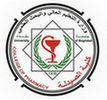The College of Pharmacy discussed the PhD dissertation entitled “Anastrozole as Spanlastics Transdermal Patch: Preparation and In-Vitro / In-Vivo Study” by the student Laila Abd Al Hussein Alwan and the supervisor, Professor Dr. Shaimaa Nazar Abd Alhammid, at the Pharmaceutical Department.
The study aimed to develop and optimize a transdermal delivery system of Anastrozole-loaded spanlastics nanovesicles to address the limitations of oral administration, including poor solubility, extensive first-pass metabolism, and associated side effects.
The study involved the preparation of 36 spanlastics formulations using the Design of Experiments approach and employing the ethanol injection method. The formulations were evaluated based on drug concentration, ultrasonication time, edge activator type, and edge activator ratio in terms of drug release, morphology, and component compatibility. Then, the optimal spanlastics formulation was selected, which exhibited the highest entrapment efficiency, the smallest vesicle size, and the lowest polydispersity index. Subsequently, the optimal formulation was incorporated into transdermal patches using varying ratios of Hydroxypropyl Methylcellulose (HPMC) and Eudragit® L100, and was compared to Anastrozole oral suspension administered to white rabbits through pharmacokinetic analysis.
The results showed that incorporating the optimal spanlastics formulation into HPMC–Eudragit® L100 patches in a 25:75 ratio achieved the best performance, demonstrating suitable mechanical properties, high drug content, and superior ex vivo skin permeability compared to the drug suspension. Also, skin irritation tests confirmed the dermal safety of the formulation. Moreover, pharmacokinetic evaluation in rabbits indicated sustained drug release and enhanced absorption with the transdermal patch compared to the oral suspension, supporting its potential as an effective and safe alternative delivery system for Anastrozole.
The study recommended that long-term stability studies and clinical trials should be conducted to confirm the effectiveness of the system mentioned above, as well as applying the spanlastic approach to other anticancer drugs.






